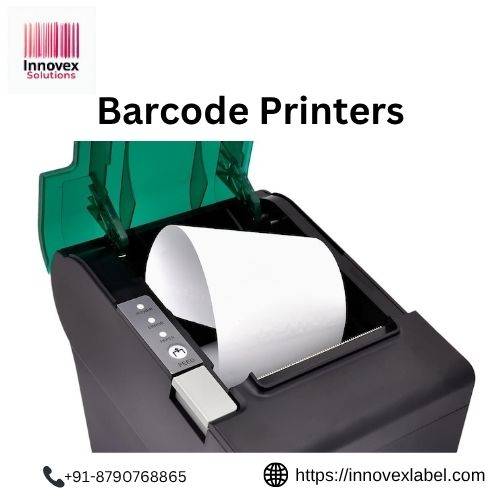In an age where speed, accuracy, and efficiency define success, businesses can’t afford to ignore the tools that make operations smoother. One such unsung hero is the barcode printer—a device that simplifies labeling and plays a crucial role in inventory management, logistics, and retail operations. Whether you run a small eCommerce store or manage a busy warehouse, a barcode printer can help streamline your workflow, reduce human error, and improve productivity.

What Exactly Is a Barcode Printer?
A barcode printer is a device specifically designed to print barcode labels. These labels are often used for tracking products, managing stock, and ensuring accurate pricing or shipping. Unlike standard printers, barcode printers are built to handle various label sizes, adhesive materials, and printing volumes.
Most barcode printers use thermal printing technology either.
Direct thermal (great for short-term labels like shipping tags), or
Thermal transfer (ideal for long-lasting labels in harsh environments).
Why Your Business Needs a Barcode Printer
If you’re still relying on handwritten labels or outsourcing your label printing, here’s why it’s time to make the switch:
1. Improved Accuracy
Barcode printers eliminate the errors that come from manual labeling. Each label is clear, consistent, and scannable, reducing the chances of product misidentification or inventory mistakes.
2. Faster Labeling
Need to label hundreds of items a day? A barcode printer can handle high-volume printing quickly and efficiently—saving your staff time and boosting productivity.
3. Better Inventory Control
Barcoded items can be scanned during check-in, storage, and checkout processes. This improves inventory accuracy, helps prevent stockouts, and ensures better tracking of your assets.
4. Professional Appearance
Well-printed barcode labels look more professional and organized. This can enhance your brand image, especially when shipping products to customers or displaying them in retail environments.
5. Cost-Effective Over Time
While a barcode printer might seem like an upfront investment, it quickly pays for itself. You’ll save on labor, reduce labeling errors, and avoid the recurring cost of outsourced label printing.
Where Barcode Printers Are Used
Barcode printers are used across a wide range of industries, including:
Retail: For price tags, product labels, and inventory control.
Warehousing & Logistics: For labeling bins, tracking shipments, and organizing inventory.
E-Commerce: For printing shipping labels, order tags, and return labels.
Healthcare: For patient wristbands, lab samples, and medication tracking.
Manufacturing: For part labels, asset tracking, and safety compliance.
No matter your business size or industry, there’s a barcode printer that fits your specific needs.
Choosing the Right Barcode Printer
When selecting a barcode printer, consider the following:
Print Volume: Desktop models are great for light use; industrial printers suit high-volume needs.
Label Size Compatibility: Ensure the printer can handle the sizes you need.
Durability: If labels are exposed to heat, chemicals, or abrasion, choose thermal transfer printing.
Connectivity: Look for USB, Wi-Fi, Bluetooth, or Ethernet options to match your setup.
Software Integration: Make sure it’s compatible with your POS, ERP, or shipping system.
Popular and reliable brands include Zebra, Brother, Honeywell, TSC, and Rollo—each offering models for different business requirements.
Conclusion
A barcode printer is more than just a convenience—it’s a valuable business tool that helps you operate more efficiently, reduce costs, and present a more professional image. From inventory accuracy to faster order fulfillment, the benefits of barcode printing are far-reaching. So, if you haven’t added a barcode printer to your business toolkit yet, now might be the perfect time. With the right model, you’ll save time, cut costs, and build a more streamlined, error-free workflow.
Barcode,
Printer

